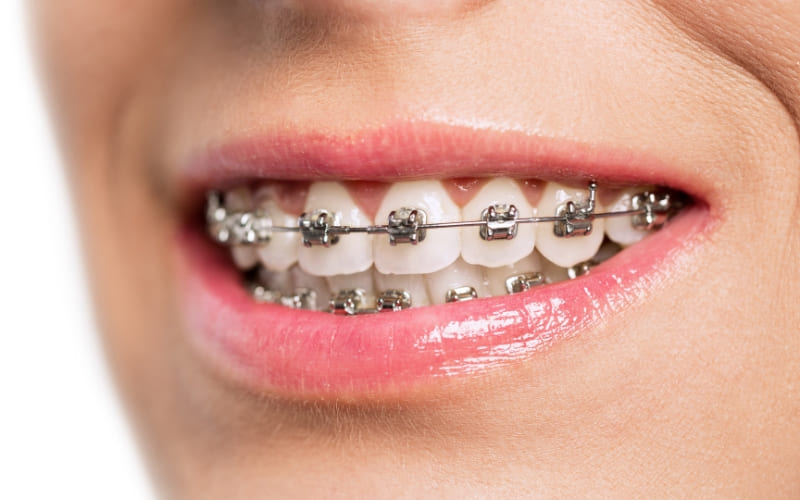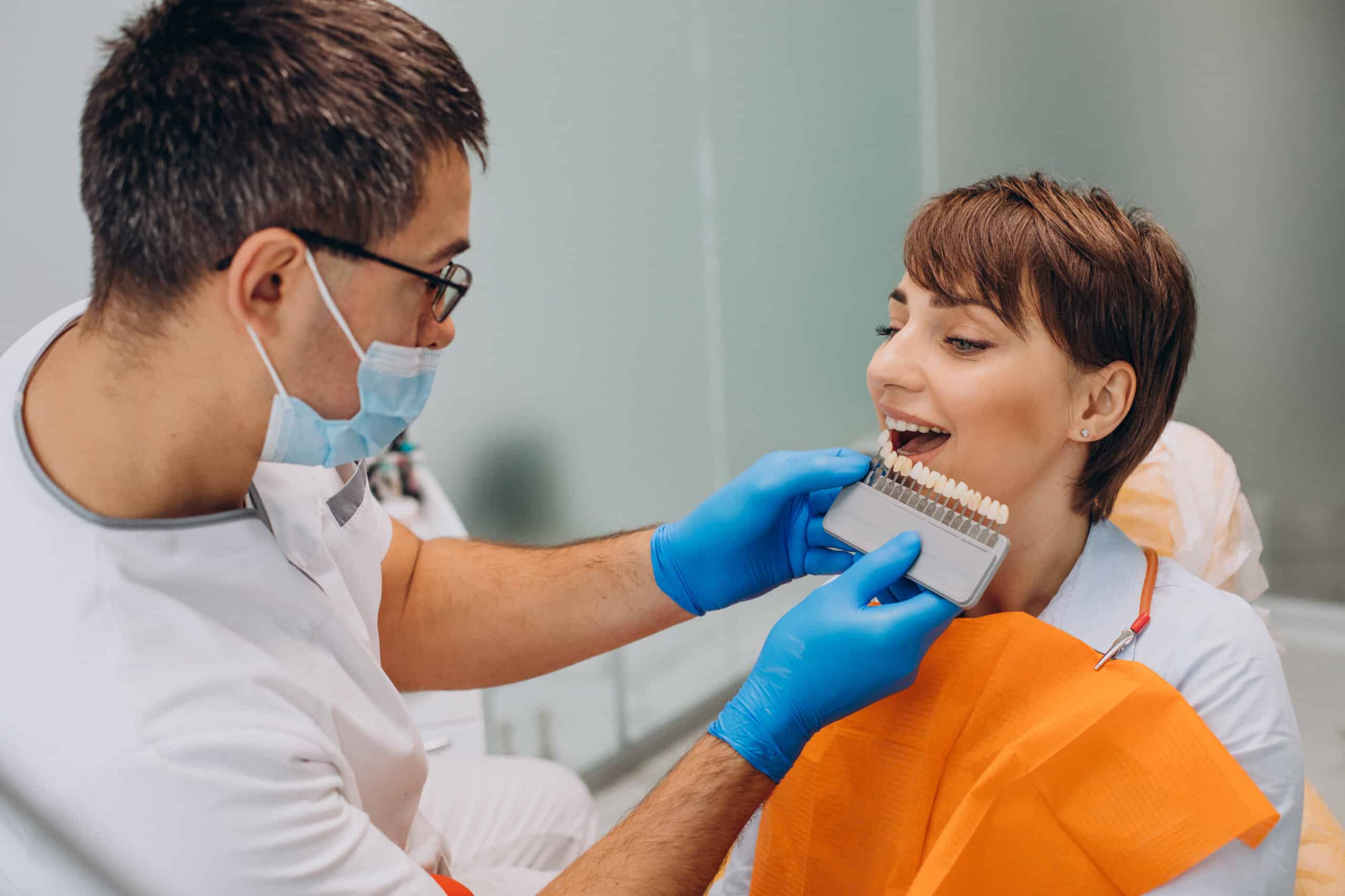Call: (810) 674-3060
What Will The Emergency Dentist Do For A Tooth Infection?

Tooth infections can cause severe pain and discomfort, making it crucial to address them promptly. In such situations, emergency dentists play a vital role in providing immediate relief and specialized care. In this article, we will explore the symptoms and causes of tooth infections, explain when it is necessary to seek help from an emergency dentist, and delve into the diagnostic procedures and treatment options they offer. Understanding the importance of timely dental care can help alleviate pain and prevent further complications.
Symptoms Of A Tooth Infection:
1. Severe toothache:
Tooth infections often cause persistent, intense pain, which can be throbbing, sharp, or constant, and can worsen when biting down or putting pressure on the affected tooth.
2. Sensitivity to hot or cold:
Tooth infections can cause increased sensitivity to temperature changes, leading to discomfort or sharp pain in the affected tooth.
3. Swelling:
A tooth infection is often indicated by inflammation and swelling near the infected tooth or surrounding gums, which may appear red, swollen, and tender to the touch.
4. Pus or drainage:
Tooth infections often manifest as pus or drainage around the infected tooth, often accompanied by a foul odor and taste, indicating an abscess.
5. Bad breath or taste:
Tooth infections cause bad breath due to the release of foul-smelling substances by bacteria, and some individuals may experience persistent unpleasant mouth taste.
6. Fever and general malaise:
Tooth infections can cause systemic symptoms like fever, fatigue, headache, or swollen lymph nodes, suggesting disease spread beyond the tooth area, though not all cases display the same symptoms.
Understanding The Causes Of Tooth Infections:
1. Tooth decay:
Tooth decay, caused by plaque buildup, leads to enamel erosion cavities and, if left untreated, can deepen into the tooth’s inner layers.
2. Untreated cavities:
Untreated cavities can lead to decay spreading to tooth pulp, a key target for bacterial infections, causing inflammation and pain.
3. Poor oral hygiene:
Poor oral hygiene practices, like brushing and flossing, lead to plaque accumulation on teeth, containing bacteria that produce acids, contributing to tooth decay and increasing the risk of tooth infections.
4. Sugary diet:
Consuming sugary foods and beverages increases mouth bacteria growth, converting sugars into acids that damage tooth enamel, causing decay and potential infections.
5. Weakened immune system:
Individuals with weakened immune systems, such as those with medical conditions or chemotherapy treatments, are more susceptible to tooth infections. Understanding the causes and taking preventive measures, such as maintaining good oral hygiene, limiting sugary consumption, and seeking timely treatment, can help protect oral health and minimize future tooth infections.
The Emergency Dental Visit Process:
1. Contacting the dental office:
To handle a tooth infection or dental emergency, contact an emergency dental office, which often has dedicated emergency lines or extended hours to handle urgent cases.
2. Triaging the situation:
The dental staff evaluates your situation, inquires about your symptoms, and may offer advice on managing pain or swelling until you can be seen.
3. Arriving at the dental office:
Upon arrival, you will be greeted by the dental staff, who will guide you through the check-in process. This may involve filling out any necessary paperwork or updating your medical history.
4. Evaluation and examination:
A dentist or dental hygienist conducts a thorough examination of your teeth, gums, and affected area, asking specific questions to understand your symptoms and medical history better.
5. Diagnostic procedures:
Dentists may order diagnostic tests like X-rays or intraoral imaging to assess the tooth and surrounding structures, identify the extent of the infection, and determine the most suitable treatment plan.
6. Discussing treatment options:
After assessing your condition and reviewing diagnostic results, your dentist will discuss available treatment options, such as root canal therapy, tooth extraction, or antibiotic prescription.
7. Addressing immediate concerns:
The dental team prioritizes addressing immediate pain or discomfort by providing temporary relief through pain management techniques or prescribing medication to alleviate symptoms.
8. Treatment planning and consent:
The dentist collaborates with you to create a personalized treatment plan, explaining the procedure, risks, and potential complications and obtaining your consent for the treatment.
9. Initiating the treatment:
The dental team will proceed with the necessary procedures to treat the tooth infection, including root canals, extractions, and antibiotic therapy.
10. Aftercare instructions:
Following treatment, the dentist will offer comprehensive aftercare instructions, including pain management, oral hygiene, diet restrictions, and follow-up appointments.
11. Payment and insurance processing:
The dental staff will assist with payment, insurance coverage, and financing options during an emergency dental visit, prioritizing your comfort and safety and ensuring prompt care for a tooth infection.
Diagnostic Procedures:
1. Medical history discussion:
The dentist will assess your medical history, including any dental issues or medications, to provide context for the diagnostic process.
2. Visual examination:
A dentist will examine teeth, gums, and affected areas for signs of infection, evaluate neighboring teeth’s condition, and examine visible damage or decay.
3. Symptom assessment:
The dentist will inquire about the severity, duration, triggers, and alleviating factors of your tooth infection to gain a deeper understanding of its nature and extent.
4. X-rays:
Dentists use dental X-rays to provide a clear view of teeth and underlying structures, revealing hidden infections, bone loss, or abscesses, aiding in accurate diagnosis and treatment planning.
5. Intraoral imaging:
Dentists may use intraoral cameras or imaging devices to capture detailed images of affected areas, providing insights into teeth, gums, and surrounding tissues.
6. Percussion and palpation tests:
Dentists use percussion or palpation tests to assess tooth tenderness and pain, determine inflammation and sensitivity, and aid in diagnosing a tooth infection.
7. Sensitivity tests:
Dentists use temperature tests to assess tooth sensitivity, as increased sensitivity to heat or cold may indicate an underlying infection.
8. Microbial testing:
Dentists may use microbial testing to identify the bacteria causing a tooth infection, enabling them to diagnose the infection accurately, determine the most effective treatment, and develop a tailored treatment plan.
Treatment Options For Tooth Infections:
1. Pain Management:
Emergency dentists prioritize pain management, administering local anesthesia to numb infected areas, and providing immediate relief for treatment without discomfort.
2. Drainage of Abscess:
Emergency dentists drain abscesses to relieve pressure and eliminate infection-causing bacteria, often through a small incision and gentle pressure to release pus buildup.
3. Root Canal Treatment:
Emergency dentists may recommend root canal treatment for severe cases, removing infected pulp, cleaning, filling with biocompatible material, and placing a dental crown for protection.
4. Antibiotics Prescription:
Emergency dentists may prescribe antibiotics to eradicate an infection, fighting off remaining bacteria and preventing further spread.
5. Follow-up and Aftercare:
After the emergency dentist completes the treatment, they provide detailed aftercare instructions, including oral hygiene, prescribed medication, and follow-up appointments to monitor progress.
Aftercare Instructions:
1. Oral Hygiene:
Maintaining good oral hygiene is crucial for healing and preventing further complications. Brush gently twice daily, especially along the gum line, and rinse with a mild, non-alcoholic mouthwash.
2. Pain Management:
After treatment, use over-the-counter pain relievers like ibuprofen to alleviate discomfort, following dosage instructions from your emergency dentist or pharmacist.
3. Avoid Chewing on the Treated Side:
Avoid chewing on the treated side of the mouth during tooth infection healing to minimize pressure and promote proper healing. Consume softer foods without excessive chewing.
4. Follow Dietary Restrictions:
Emergency dentists may suggest dietary restrictions to prevent infection and treatment-related damage, including avoiding hot, spicy, alcohol, and crunchy foods to prevent irritation or damage.
5. Take Prescribed Medications:
Adhere to your emergency dentist’s prescription for antibiotics and complete the entire course, even if you feel better before completing the entire prescription.
6. Schedule Follow-Up Appointments:
Regular follow-up appointments with your emergency dentist are essential for monitoring progress and ensuring complete infection eradication, so schedule and attend all recommended check-ups.
7. Report Any Concerns:
If you experience persistent pain, swelling, or unusual symptoms post-treatment, it’s crucial to immediately consult an emergency dentist for appropriate guidance and address any concerns.
8. Maintain Regular Dental Visits:
Regular dental check-ups and cleanings are crucial for identifying underlying issues and preventing future infections after treating a tooth infection, following the doctor’s personalized advice for optimal healing.
Aftercare following a tooth infection treatment is vital for successful healing and long-term oral health. By following the aftercare instructions provided by your emergency dentist, you can minimize discomfort, prevent complications, and promote a speedy recovery. Maintain good oral hygiene, manage pain appropriately, avoid chewing on the treated side, and adhere to dietary restrictions if advised. Take any medication recommended exactly as indicated, and keep all follow-up visits to track your improvement. If you have any concerns or experience unusual symptoms, don’t hesitate to contact your emergency dentist. Remember, their professional guidance and your commitment to aftercare will ensure the best possible outcome and help prevent future dental issues.
You can also read our latest article: Is It Worth Getting White Fillings?




